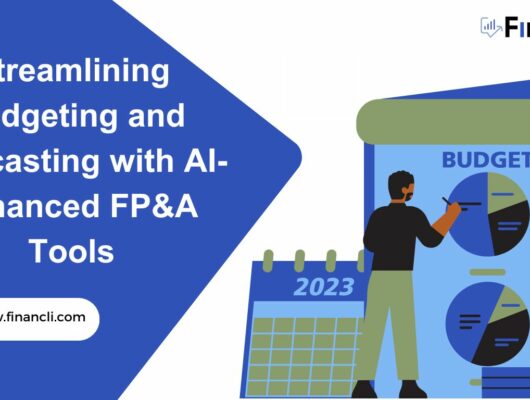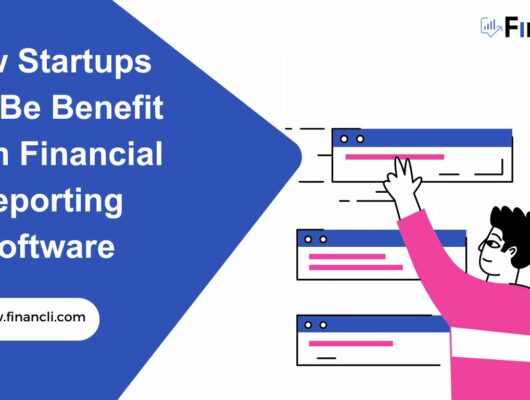The Role of Financial Dashboards in Enhancing Investor Relations
Introduction
In today’s fast-paced business environment, the ability to quickly understand and react to financial information is crucial. This is where financial dashboards come into play. They serve as a vital tool for companies, providing a clear and concise view of an organization’s financial health. In this article, we will discuss the importance of financial dashboards and their relevance in modern business practices.
Definition and Purpose Of Financial Dashboard
A financial dashboard is a tool that visually displays a company’s key financial metrics in an interactive manner. It’s designed to give executives, finance professionals, and investors a quick and comprehensive view of an organization’s financial status.
Key Components and Features

Financial dashboards are sophisticated tools that transform how companies interpret and utilize their financial data. They typically encompass several key components:
Key Performance Indicators (KPIs)
– Essential Metrics: KPIs are the backbone of any financial dashboard. They include crucial metrics such as cash flow, profit margins, and return on investment (ROI).
– Performance Tracking: These indicators help track a company’s financial health and performance over time. For instance, cash flow metrics provide insights into the company’s liquidity, while profit margins reveal its profitability efficiency.
– Goal Alignment: KPIs are aligned with the company’s financial goals and objectives. They provide financial professionals and stakeholders with a clear understanding of where the company stands in relation to its targets.
Visual Elements
– Data Visualization: Financial dashboards heavily rely on visual elements like charts, graphs, and gauges. These tools make complex data more digestible and easier to understand at a glance.
– Interactive Features: Many dashboards offer interactive features, allowing users to delve deeper into the data. For example, clicking on a bar in a bar chart might reveal more detailed information about a particular financial metric.
– Enhanced Comprehension: By presenting data visually, these dashboards facilitate quicker and more effective comprehension of financial information, aiding in better decision-making.
Customizable Layouts
– Tailored Insights: Customizable layouts in financial dashboards enable users to concentrate on particular areas of interest. This means that different users, from finance leaders to potential investors, can tailor the dashboard to display the information most relevant to them.
– Flexibility: This flexibility is crucial in catering to the diverse needs of various stakeholders within a company. For instance, a CFO might focus on cash management dashboards, while a department head might concentrate on the budget variance of their specific business unit.
– User-Friendly Interface: Customization also makes these dashboards more user-friendly, encouraging broader use across the organization and ensuring that all stakeholders have access to the financial insights they need.
Comparison with Traditional Financial Reporting Tools

The contrast between financial dashboards and traditional financial reporting tools is stark, primarily in how data is presented and utilized:
Traditional Financial Reporting
– Static Reports: Traditional methods often involve static reports like balance sheets, income statements, and cash flow statements. These documents are typically generated for a specific reporting period and can quickly become outdated.
– Time-Consuming Analysis: Analyzing these reports requires significant time and effort. Users often need to sift through pages of data to extract meaningful insights, which can delay decision-making processes.
Financial Dashboards
– Dynamic, Real-Time Data: In contrast, financial dashboards provide dynamic, real-time data. They offer a current snapshot of financial performance, updated continuously as new data becomes available.
– Quick, Informed Decision-Making: This immediacy allows stakeholders to make quicker, more informed decisions. Real-time insights enable a proactive approach to financial management, as opposed to the reactive nature of traditional reporting.
– Comprehensive Overview: Financial dashboards offer a more complete picture of a company’s financial health. They integrate data from various sources, providing a holistic view that can reveal correlations and trends not immediately apparent in traditional reports.
In summary, financial dashboards revolutionize financial analysis and reporting by offering real-time, interactive, and customizable data visualization. This approach stands in stark contrast to traditional financial reporting methods, enabling more agile and informed decision-making within organizations.
The Importance of Investor Relations
Investor relations (IR) refers to the management of relationships and communication between a company and its financial stakeholders. The main objective of Investor Relations (IR) is to provide investors with an accurate and transparent view of a company’s performance and future prospects.
Impact on Company Success
Effective IR can significantly impact a company’s success. Improved investor confidence can lead to better stock performance and easier access to capital.
Challenges in Investor Relations
Maintaining robust investor relations can be challenging. It requires consistent transparency and the ability to provide up-to-date, accurate financial information to stakeholders.
Enhancing Investor Relations through Financial Dashboards
Real-time Data Access
Financial dashboards provide immediate access to financial data, which is crucial for making timely strategic decisions. This feature is particularly important for investors who need to understand the current financial status of their investments.
Transparency and Trust
By offering a clear view of financial performance, dashboards play a crucial role in building transparency and trust with investors. This transparency is key to maintaining healthy investor relations.
Data Visualization
One of the biggest advantages of financial dashboards is their ability to simplify complex financial data. Through effective data visualization, stakeholders can easily understand and analyze financial trends and patterns.
Customization and Relevance
Financial dashboards can be customized to highlight the information most relevant to investors. This customization ensures that investors have the specific data they need to make informed decisions.
Frequently Asked Questions:
Building an Effective Financial Dashboard?
-To build an effective financial dashboard, focus on including relevant financial metrics that align with the company’s strategic goals. The dashboard should be intuitive, providing clear and actionable insights.
What is the objective of a Financial Dashboard?
-The primary objective of a financial dashboard is to offer a real-time, comprehensive view of a company’s financial performance. This aids in informed decision-making and strategic planning.
What data should be included in a Financial Dashboard?
-A financial dashboard should include data that is crucial for assessing the financial health of a company. This includes cash flow statements, profit margins, financial ratios, and other key metrics.
Can we use Excel for Financial Dashboards
-While Excel can be used to create basic financial dashboards, specialized financial dashboard software offers more advanced features and functionalities for a more detailed and interactive experience.
Conclusion
Financial dashboards are indispensable tools in the realm of investor relations. They provide a clear, concise, and real-time view of a company’s financial health, which is crucial for maintaining transparency and trust with investors. By leveraging these dashboards, companies can ensure that they are providing their investors with the necessary information to make informed decisions, thereby fostering strong, long-lasting relationships. As the business world continues to evolve, the role of financial dashboards in investor relations is likely to become even more significant, making them an essential component of any successful business strategy.






